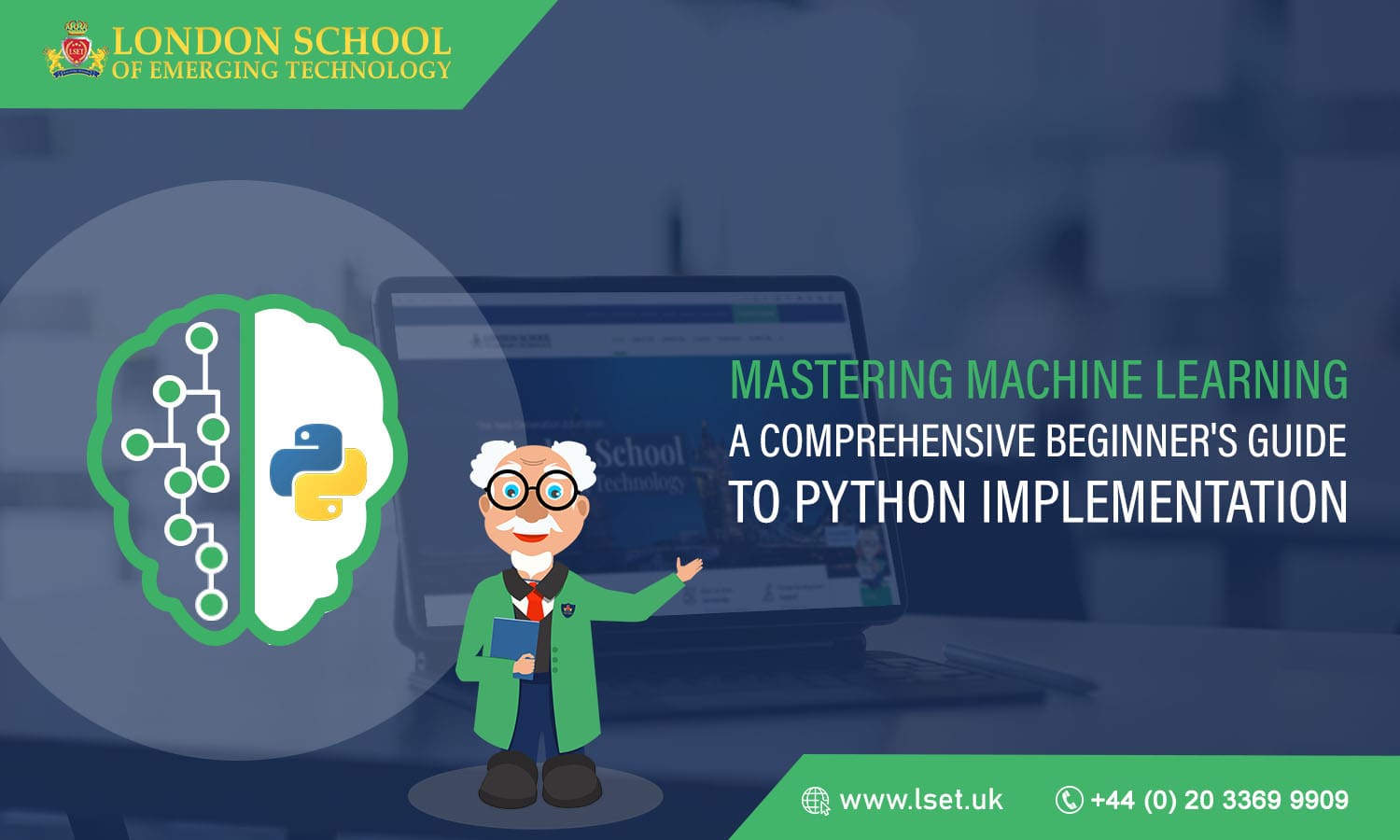Introduction to Machine Learning
Machine learning is revolutionising how we solve complex problems and make informed decisions. It is a division of artificial intelligence that empowers computers to learn and improve their functionalities through experience, avoiding the need for explicit programming. In this comprehensive beginner’s guide, you will delve into machine learning and learn how to implement it using Python.
Understanding the Basics of Machine Learning
Before delving into the technical aspects of machine learning, grasping its fundamental concepts is essential. [Machine learning] can be categorised into three main types: supervised, unsupervised, and reinforcement. Within supervised learning, models undergo training using labelled data to facilitate predictions or classifications.
Conversely, unsupervised learning focuses on identifying patterns or structures in unlabeled data. Finally, reinforcement learning involves training an agent to decide by considering rewards and punishments.
Benefits of Machine Learning
Machine learning provides significant advantages across diverse industries, with one of its primary benefits being the capability to automate tasks and generate predictions based on data. This enables businesses to optimise operations, improve efficiency, and make data-driven decisions. [Machine learning] can detect patterns and anomalies, leading to enhanced fraud detection, predictive maintenance, and personalised recommendations. Additionally, [machine learning] algorithms can analyse vast amounts of data much faster than humans, providing valuable insights and uncovering hidden patterns.
Machine Learning Algorithms and Models
Machine learning algorithms form the backbone of any [machine learning] system. There are several popular algorithms, each with its strengths and weaknesses. Linear regression predicts continuous values, while logistic regression is employed for classification tasks. Decision trees and random forests are powerful algorithms for both regression and classification. Support Vector Machines (SVM) are useful for separating data into different classes, and the K-nearest neighbours (KNN) algorithm effectively finds similar data points.
Neural networks, encompassing deep learning, are gaining popularity owing to their aptitude for managing intricate patterns and extensive datasets.
Introduction to Python for Machine Learning
Many machine learning practitioners prefer Python as their programming language, citing its simplicity and the wealth of available libraries and tools. In this section, you will learn Python programming basics and how it can be used for [machine learning.] Python’s syntax is easy to understand and read, making it an ideal language for beginners. Moreover, Python has a vast ecosystem of libraries, such as NumPy, Pandas, and Matplotlib, which provide powerful tools for data manipulation, analysis, and visualisation.
Setting up your Python Environment for Machine Learning
To start implementing machine learning algorithms in Python, you must set up your development environment.
Begin by installing Python on your machine. Download the most recent version from the official website and follow the installation instructions. Once Python is installed, package managers like pip or conda can install the necessary libraries. It is recommended to use a virtual environment to keep your project dependencies separate. This ensures that your machine-learning projects remain isolated and can be easily replicated.
Data Preprocessing for Machine Learning in Python
Data preprocessing holds a pivotal role in every [machine learning] project. It involves transforming raw data into a format suitable for analysis and model training. In this section, you will learn various techniques for data preprocessing in Python. This includes handling missing data, encoding categorical variables, scaling numerical features, and splitting the dataset into training and testing sets. Python libraries such as sci-kit-learn provide convenient functions and classes for data preprocessing tasks, making cleaning and preparing your data easier before feeding it into machine learning models.
Implementing Machine Learning Algorithms in Python
Now that you have a solid understanding of the basics and have preprocessed your data, it’s time to implement machine learning algorithms in Python. This section will cover widely recognised algorithms, such as linear regression, logistic regression, decision trees, random forests, support vector machines, and K-nearest neighbours. You will gain insight into training these models with your preprocessed data and assessing their performance using relevant metrics. Python libraries like Scikit-learn and TensorFlow will be used to implement and train these algorithms efficiently.
Evaluating and Fine-tuning Machine Learning Models
Assessing the effectiveness of machine learning models is crucial for ensuring their performance. This section introduces you to diverse evaluation metrics, including accuracy, precision, recall, and F1-score. Discover how to leverage these metrics to evaluate and compare the performance of your models. Moreover, you will discover techniques like cross-validation and hyperparameter tuning to fine-tune your models for optimal performance. Python libraries such as sci-kit-learn provide easy-to-use functions for evaluating and fine-tuning machine learning models.
Machine Learning Projects in Python
Putting your knowledge into practice is crucial for mastering machine learning. This section will present several machine learning project ideas you can implement using Python. You will learn to apply different algorithms to real-world datasets and solve specific problems. These projects will give you hands-on experience and enable you to understand machine-learning concepts better. By working on projects, you will sharpen your skills and become more confident in implementing machine learning algorithms in Python.
Conclusion
Machine learning is a rapidly evolving field with tremendous potential for solving complex problems and driving innovation. In this comprehensive beginner’s guide, you have learned the basics of machine learning, gained a solid foundation in Python for machine learning, explored various algorithms and models, and discovered essential libraries and tools. By following this guide, you are well on mastering machine learning and unlocking its transformative power. So why wait? Start your journey today and explore the foundations of machine learning at the London School of Emerging Technology (LSET). Our beginner’s Guide course will equip you with the necessary skills and knowledge to excel in this exciting field.

